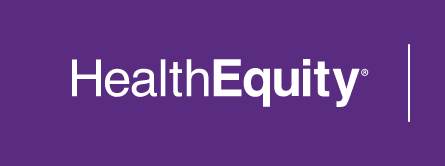The 401(k) industry is a complex mixture of rules and regulations that are written and enforced by numerous government entities. Due to this arrangement, there are a lot of complications that can arise. Every year, 401(k) plans around the country are subject to government non-discrimination and coverage testing. Because the Federal Government offers substantial tax benefits with the 401(k) plan, they want to ensure that owners, executives, highly-compensated, and key employees aren't unduly benefited from the plan compared to all other employees.
Failing an annual test may result in possible refunds, fines, and tax penalties. It is vital that an employer understands how the testing works to better fulfill fiduciary responsibilities. Below, we've outlined the most common tests that are performed each year.
Important Definitions
Before going into a further explanation of the different testing that most 401(k) plans are subject to, there are certain terms that you should learn.
HCE - A Highly Compensated Employee (HCE) is defined as an employee that owns more than 5% of the company or received at least $120,000 in compensation for the previous two years. The amount of compensation used for determination may be adjusted each year depending on inflation.
Key Employee - A key employee is defined as an employee that owns more than 5% of the company, or owns more than 1% of the company and received more than $150,000 in compensation, or an officer with an annual compensation in excess of $170,000 in the previous two years. The amount of compensation used for determination may be adjusted each year for inflation.
Safe Harbor 401(k) Plan - A Safe Harbor 401(k) Plan is set up to skirt some or all of the non-discrimination tests. It requires a company to make a certain level of employer contribution or match in exchange for avoiding the annual testing.
Benefiting Employee - An employee is generally said to be benefiting under a plan if that employee is eligible to participate in the plan.
Different types of testing
ADP
The Actual Deferral Percentage test, or more commonly known as the ADP test, compares the average deferral rate of HCEs to that of Non-HCEs ("NHCE"). If subject to this testing, Highly Compensated Employees could be limited to the amount of money that they can defer into their accounts depending on the average deferral rate of NHCEs.
Here is an example. Let's imagine that Company X has 3 owners/HCEs and 9 employees/NHCEs. During the plan year, the three owners/HCEs deferred on average 11% of their pay while the NHCE's average deferral rate was only 4%. According to the IRS, the HCEs' average deferral rate may only exceed the NHCEs' average by the specific limits summarized as follows:
NHCE Percentage Maximum HCE Percentage
2% or less NHCE % √ó 2
2%-8% NHCE % + 2
more than 8% NHCE % √ó 1.25
In the example above, the maximum amount that HCEs can now defer is limited to just 6%. This means that the employer must make a correction to have HCEs receive a refund in order to meet the 6% threshold or the employer must make contributions to NHCEs to the extent necessary to pass the test.
ACP
The Actual Contribution Percentage test uses the same IRS limit table as the ADP test, but compares the average amount of employer contributions to both HCEs and NHCEs.
Here is the caveat; even employees that do not participate, but were eligible to participate during the plan year, are included in both ADP and ACP testing. This also includes those that were terminated during the year unless the plan requires employment at the end of a plan year. In order for a plan to avoid both of these tests, a Safe Harbor plan must be in place.
Top heavy testing
Top heavy testing compares the total account balances of key employees to those that are not. In general, a plan is considered to be top heavy if more than 60% of total plan assets are attributable to key employees. A Safe Harbor plan satisfies Top Heavy testing unless any types of additional employer contributions, including discretionary profit-sharing, are used during the year.
Coverage testing
Coverage testing is established to ensure that each plan is covering enough of the NHCEs. Sounds pretty simple, right? While the underlying concept is easy to understand, the calculations can be a bit more confusing. The test compares the percent of benefiting NHCEs to the percent of benefiting HCEs in a plan. The magic number to keep in mind is 70%.
Let's take a look at company X again for an example of how the testing is done. Due to specific exclusions of employee classifications in the plan, only 5 of the 9 Non-HCEs are eligible to participate and 2 of the 3 HCEs are eligible. The calculations would go like this:
# of NHCEs benefiting / Total # of NHCES = 5/9 = 55.6%
# of HCEs benefiting / Total # of HCEs = 2/3 = 66.7%
NHCE ratio / HCE Ratio = 55.6% / 66.7% = 83.3%
Since the ratio that compares NHCEs to HCEs is greater than 70%, Company X has passed the testing. But, if there was not an exclusion for any HCEs, then Company X would have failed coverage. Coverage testing is slightly different from the other tests in that all plans must satisfy the requirements regardless of Safe Harbor status.
Conclusion
It's important to understand that each of these tests have other highly complicated regulations that affect how they are done with a specific plan. Controlled and affiliated service groups, legally excludable employees, and a number of other factors can affect testing. While all of these descriptions are fairly basic, having a general understanding can help plan sponsors better fulfill their fiduciary responsibilities.
This article was produced in collaboration with HealthEquity Retirement Services, LLC. HealthEquity Retirement Services, LLC is a wholly owned subsidiary of HealthEquity, Inc. Nothing in this communication is intended as legal, tax, nancial or medical advice.


